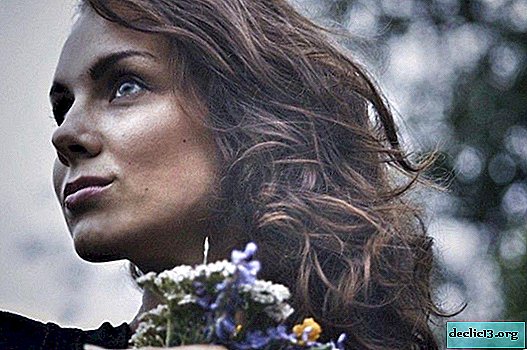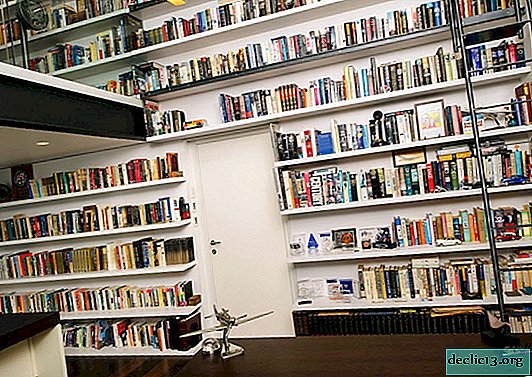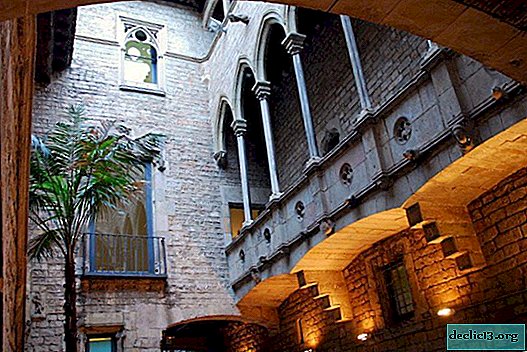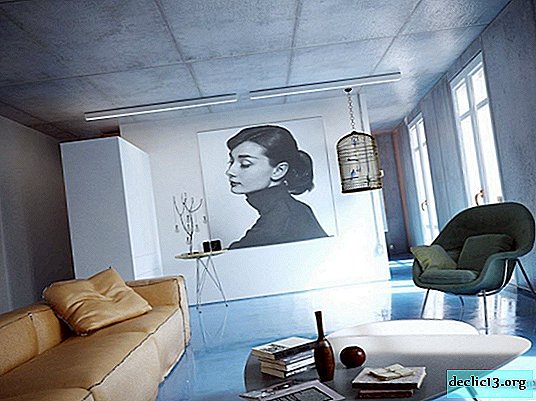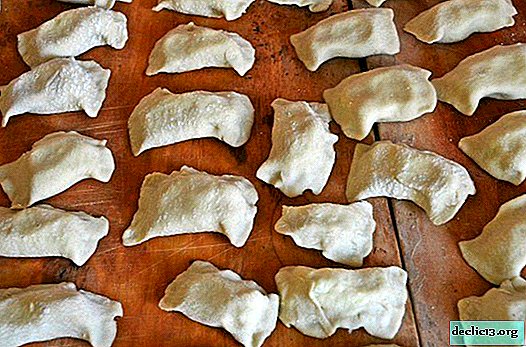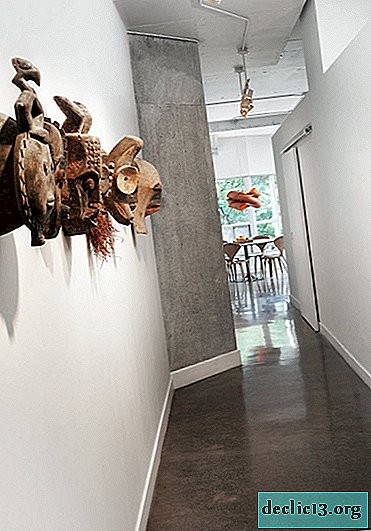Istanbul Choir Museum - the best mosaics and frescoes of Byzantium
Istanbul is the richest tourist attraction city in Turkey. However, many of its historical monuments are undeservedly deprived of the attention of tourists. These include the Istanbul Choir Museum. At first glance, a simple building harbored a great cultural treasure in the form of mosaics and frescoes of the Byzantine period. This ancient church, also often called Karie, was built over 1,500 years ago. But over the centuries, it practically did not lose the splendor of its interior decoration, in view of which the object was recognized as the most preserved Byzantine monastery in Istanbul.
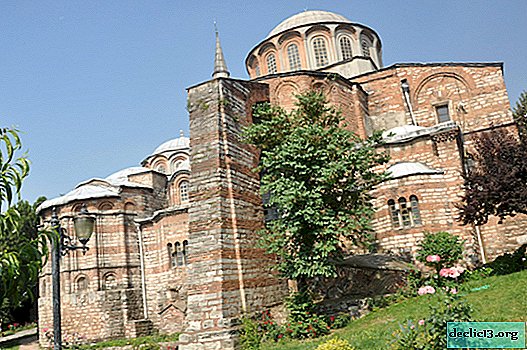
History reference

The exact date of the erection of the shrine is unknown, but the first mention of it dates back to the 4th century. Initially, the building was located outside the borders of Constantinople, as evidenced by its name: literally the word "Chora" can be interpreted into Russian as "a monastery outside the city." However, Constantinople grew rapidly and already under the reign of Emperor Theodosius, the monastery was within its boundaries and gained the status of a significant religious object.
In the 6th century, the church of Chora was subjected to the destructive power of an earthquake and was almost wiped off the face of the earth. But by order of the emperor Justinian, the monastery was not only restored, but also expanded due to the hospital attached to it. And it was during this period that Byzantine masters first decorated the walls of the temple with frescoes and mosaics.
The church acquired the greatest importance in the 11th century, when the imperial family, in view of the constant threat of attack on Constantinople, moved to the palace in Vlacherna, remote from the center. The Choir Temple located near the residence was used to store especially valuable relics collected from all the monasteries of the city. In the 14th century, the imperial court allocated a large sum for the reconstruction of the shrine. It was then that many mosaics and frescoes appeared here, which visitors to the museum today admire.

The turning point in the history of the monastery, as in the history of all Byzantium, was the 15th century, when Constantinople was captured by the Turks. The Ottomans converted the church into a mosque, built a minaret near its walls and gave it a new name - Karie. But the invaders did not destroy the interiors, but simply whitewashed the murals and mosaics. This saved the creations of the Byzantine masters and allowed them to reach our days in excellent condition.
In 1945, the Chora Monastery in Istanbul was transformed into a museum. Before the doors of Karie opened to visitors, grand restoration work was carried out within its walls, which lasted from 1948 to 1959. The Byzantine Institute of America undertook to restore the decoration of the temple, whose specialists managed to remove the layer of plaster from mosaics and frescos step by step and give them the most original appearance.
Architecture and Interior
The Karie Museum looks rather modest and is a typical monastery of late Byzantine architecture with its inherent multi-colored masonry. And although the building seems small outside, its interior space is quite voluminous. Inside the church is divided into three parts: the lobby, the main hall and the funeral chapel. The main decoration of its interior are frescoes and mosaics, telling about the life and deeds of Jesus Christ and the Virgin. Since the monastery of Chora was destroyed, rebuilt and rebuilt more than once, it preserved works mainly of the late Byzantine era, dating from the 11th and 14th centuries.

Frescoes in Kariya adorn ceilings, arched vaults, domes and part of the walls of the monastery. Works with biblical motifs are decorated with gilding, in some places openwork stone carvings have been preserved. The domes of the church are especially skillfully painted, on which you can see both the faces of the Virgin and the Archangels, as well as the images of Christ with a genealogy of several tens of generations.

Mosaics at the Choir Museum decorate the walls and floors of the structure. A considerable part of the artwork is dedicated to the birth and life of the Virgin Mary. Almost the entire wall is occupied by images of the biblical scene of the beating of infants. Another part of the mosaics tells us about the great deeds of Christ: here you can find numerous works on the healing of the afflicted, as well as paintings with scenes of the transformation of water into wine and the multiplication of bread.

The interior of Karie allows not only to admire the skill of Byzantine architects, but also through art to follow the most important events from the life of Christ and the Virgin Mary. It is noteworthy that you will not find such a number of mosaic images of biblical scenes in any temple in the world. And this fact makes the interior of the Chora truly unique.
Read also: Archaeological Museum of Istanbul - a million exhibits from the history of Turkey.Find out RATES or book any accommodation using this form
How to get there
If you are looking for information on how to get to the Choir Museum in Istanbul, then it will be useful for you to read this paragraph of this article. Kariye is located in Edirnekapi in the Fatih area, 2 km from the left bank of the Golden Horn Bay. Although the object is far from the main attractions of the metropolis, it is still the center of the city, so you can get here from many points of Istanbul. And if you are considering only public transport, then the easiest way is to use the metro or municipal bus.

To get to the museum by metro, you need to take the red line M1A and land at Ulubatlı station. Next you need to walk northeast of the stop along Beylerbeyi Street. The path will be 1.5 km, which will take from 20 to 25 minutes on foot.
You can also get to Kariya by bus. Each district runs its own minibus, making a stop in the Edirnekapi region. So, depending on your starting point, you will need to catch the following bus lines:

- 41ST follows Seyrantepe - Topkapı
- Line 522B goes along the route Yenidoğan-Topkapı
- Route 500A runs in the direction of Edirnekapı-Kadıköy
- The 500T branch follows the Tuzla-Cevizlibağ
- The 500L line goes along the Cevizlibağ-Levent route
- Route 41AT runs in the direction Ayazağaköyü-Davutpaşa Yıldız Teknik Üniversitesi
- 75M branch follows Beyazıt - Mecidiyeköy
- Line 77MT goes along the route Mecidiyeköy-Edirnekapı-Taksim
- Route 93M runs in the direction of Zeytinburnu - Mecidiyeköy
If you want to get to the museum from Eminenu Square, then buses with numbers 31E, 36KE, 37E, 38E are suitable for you.
On a note: Istanbul Metro - useful information for tourists.
Practical information

Address: Dervişali Mahallesi, Kariye Cami Sk. No: 8, 34087 Fatih / İstanbul.
Opening hours: From April 15 to October 1, the Kariye Museum in Istanbul is open from 09:00 to 19:00. The last ticket can be purchased until 18:00. From October 1 to April 15, the facility operates on an abbreviated schedule - from 09:00 to 17:00. Ticket offices are available until 16:30. You can visit the church any day except Wednesday.
Cost of visit: 30 tl.
Official website: www.choramuseum.com/
You will be interested in: How Istanbul works - a review of the city districts with a photo.
Useful Tips

- Before visiting Kariye, be sure to find information about the restoration work in the museum. Many tourists came to the church during the reconstruction period and were not able to fully enjoy the decoration of the temple.
- To make your walk around the temple rich and interesting, we advise you to study information about the monastery in advance or purchase an audio guide in Russian at the entrance (price 15 tl).
- Istanbul's Chora Monastery is on the list of museums that you can visit for free with the Museum Pass museum card. This card costs 125 tl and gives its owners the opportunity to arrange excursions to the best attractions of the city for free for 5 days. Plus, such a museum pass will save you from waiting in line at the box office.
- As part of an excursion to the Museum of the Choir, we recommend that you also look at the Mihrimah Sultan Mosque, which is located just 500 meters from the property.
- Since the place is little known, in the church you will not find crowds of tourists. Therefore, you do not need to come here in advance, as to many other sights of Istanbul.
- Despite the religious orientation of the object, visiting the museum will be interesting not only to believing Christians, but also to ordinary tourists.
- To study the decoration of the temple will take no more than an hour.

Good to know: What to see in Istanbul on your own - 3-day itinerary.
Compare accommodation prices using this form
Output
The Choir Museum in Istanbul is worth a visit even despite its remoteness from the historical district of the city. Most tourists who visited the church left the most enthusiastic impressions. Although many travelers undeservedly ignore the museum, it’s not worth repeating their mistake. And if you are afraid of the inaccessibility of an object, then you can always use a taxi.





